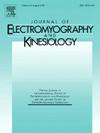What are my muscles up to? The contribution of surface electromyography to clinical decision-making
IF 2.3
4区 医学
Q3 NEUROSCIENCES
引用次数: 0
Abstract
Muscles move the body. The varying levels of movement precision needed daily results from a complex interplay within the central nervous system, muscles and sensory feedback, referred to as neuromechanics. This neuromechanical interplay is often impaired in pathology. Although, diagnosis and therapy would benefit from information about the patient’s specific neuromechanical control, no procedures have yet been established in clinical practice that allow this information to be fully recorded. Surface electromyography (sEMG) links neuronal input and muscle function and helps to understand how the CNS orchestrates the multitude of possibilities the neuromusculoskeletal system has at its disposal to solve a movement task. This 2024 Basmajian-Lecture-Paper will highlight sEMG applications in physiological and pathological conditions, to illustrate the potential contribution of sEMG to clinical decision-making. Focussing first on infants’ motor development, it will contribute to the discussion on how neuromechanics and motor skills develop. Continuing with considerations on motor unit activation in health and disease and describing the difference between physiological and pathological muscle coordination in dynamic conditions, it aims to address the possibilities but also the limitations of sEMG in clinical applications. Finally, the influence of robotic support on neuromechanical control and thus on re-learning of motor skills are discussed.
我的肌肉在做什么?表面肌电图对临床决策的贡献
肌肉使身体运动。每天需要的不同程度的运动精度是中枢神经系统、肌肉和感觉反馈之间复杂的相互作用的结果,这种相互作用被称为神经力学。这种神经力学的相互作用在病理上经常受损。虽然,诊断和治疗将受益于患者特定的神经机械控制信息,但在临床实践中尚未建立程序,允许完整记录这些信息。表面肌电图(sEMG)将神经元输入和肌肉功能联系起来,并有助于理解中枢神经系统如何协调神经肌肉骨骼系统解决运动任务的多种可能性。这篇2024 Basmajian-Lecture-Paper将重点介绍肌电图在生理和病理条件下的应用,以说明肌电图对临床决策的潜在贡献。首先关注婴儿的运动发展,它将有助于讨论神经力学和运动技能的发展。继续考虑运动单元在健康和疾病中的激活,并描述动态条件下生理和病理肌肉协调的差异,旨在解决肌电图在临床应用中的可能性和局限性。最后,讨论了机器人支持对神经机械控制的影响,从而对运动技能的再学习产生影响。
本文章由计算机程序翻译,如有差异,请以英文原文为准。
求助全文
约1分钟内获得全文
求助全文
来源期刊
CiteScore
4.70
自引率
8.00%
发文量
70
审稿时长
74 days
期刊介绍:
Journal of Electromyography & Kinesiology is the primary source for outstanding original articles on the study of human movement from muscle contraction via its motor units and sensory system to integrated motion through mechanical and electrical detection techniques.
As the official publication of the International Society of Electrophysiology and Kinesiology, the journal is dedicated to publishing the best work in all areas of electromyography and kinesiology, including: control of movement, muscle fatigue, muscle and nerve properties, joint biomechanics and electrical stimulation. Applications in rehabilitation, sports & exercise, motion analysis, ergonomics, alternative & complimentary medicine, measures of human performance and technical articles on electromyographic signal processing are welcome.

 求助内容:
求助内容: 应助结果提醒方式:
应助结果提醒方式:


